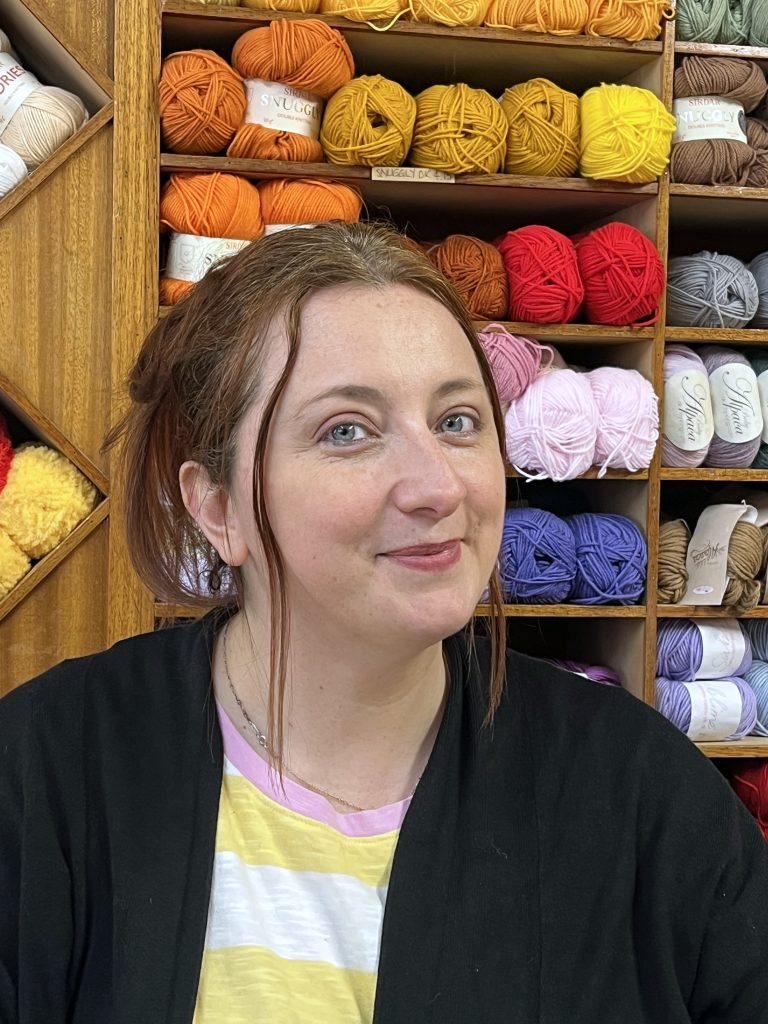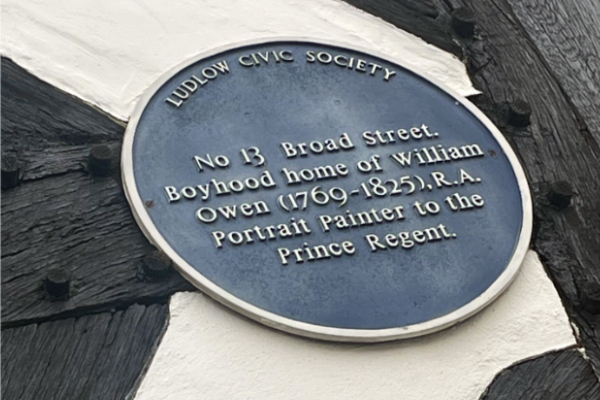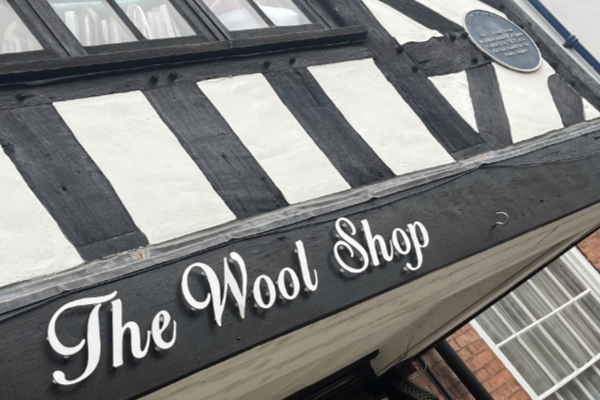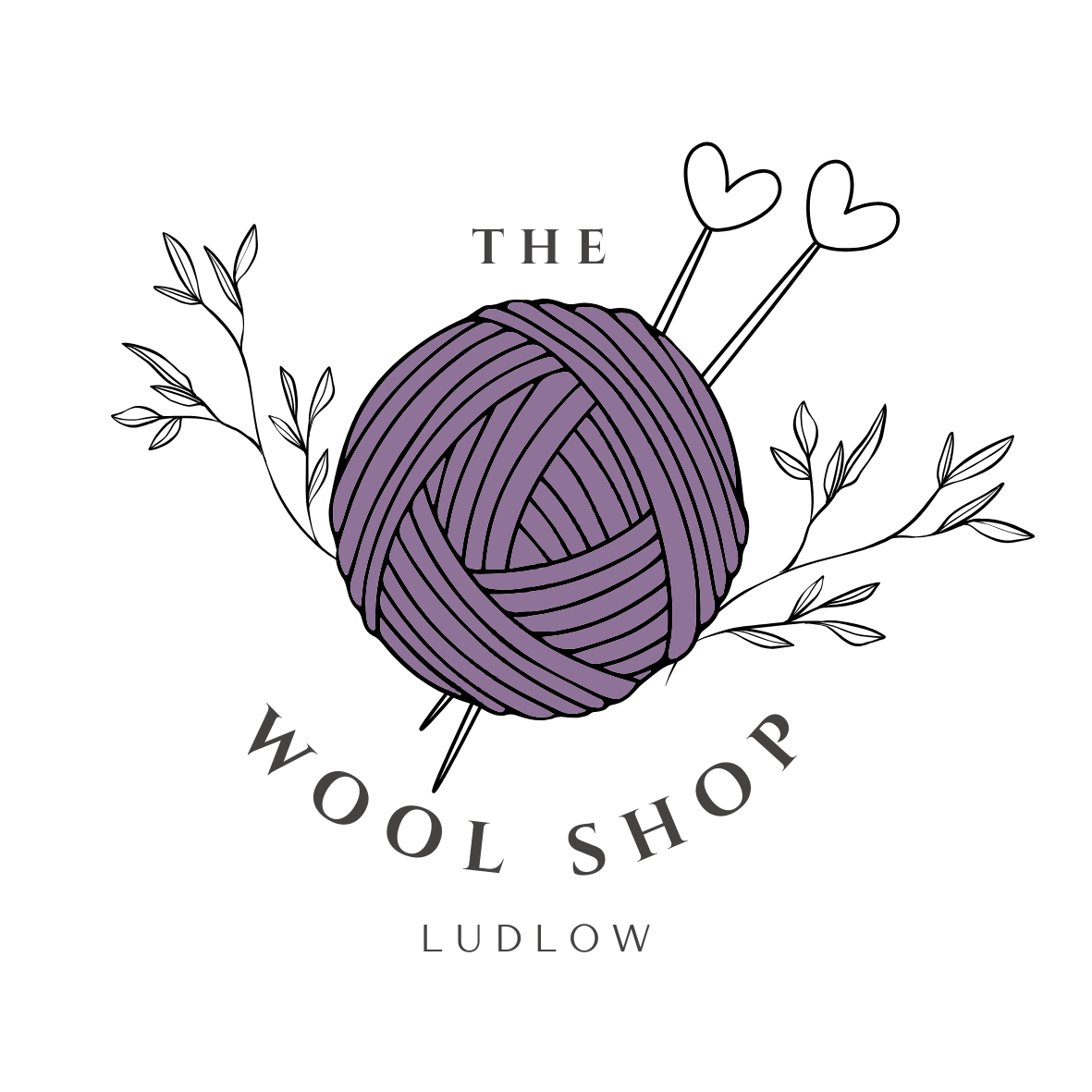Your basket is currently empty!
About Us
About Me
Hi, I’m Keely and I am the new owner of The Wool Shop on Broad Street.
Having been an enthusiastic crafter from a very early age, I am thrilled to now be the owner of The Wool Shop which has been part of the Ludlow community for so long.
I spent the last 10 years in the corporate world working in legal recruitment and the opportunity to work in an area I am passionate about is very exciting.

Being surrounded by colour and creativity on a day to day basis is so inspiring and I am keen to introduce new products including independent UK based yarns, designs and workshops to the area.
Please do come in say hello and follow me on social media!
You will hear more from me in my blog. Sometimes just thoughts and ramblings, sometimes information, sometimes ideas and inspiration.
History Of The Wool Shop
The Wool Shop is a Grade II listed building from the 17th century on Broad Street, in the heart of Ludlow, Shropshire.
It possesses a Ludlow Civic Society blue plaque as the building was the boyhood home to William Owen (1769 -1825) who became portrait painter to the Prince Regent. William was the eldest son of Jeremiah Owen, who moved his barber’s business to number 13 in the year William was born.


In the 18th and 19th centuries ‘fashionable’ Broad Street provided a clientele for a range of specialised services. In 1794 Henry Proctor, son of the Vicar of Orleton, set up his printing presses at number 13, later removing them to more spacious quarters at number 10.
In the 19th century a Miss Heighington, a milliner, acquired progressively larger premises, first at number 13, then number 19 and finally number 53 for her ‘Spring Fashions’ and Novelties of the Season, selected from the first French houses.
Since the early 1930s, number 13 has been a wool shop, offering a wide range of wool, fabric, embroidery and haberdashery items.
Keely has recently heard from a previous owner that at some stage between Miss Heighington leaving and it becoming a wool shop, number 13 is also rumoured to have been a cobblers and was anecdotally visited by Queen Victoria.
About Broad Street
In 1540 the topographer John Leland, visiting Ludlow on his itinerary of the principal towns of England to gather information for the government of Henry VIII, described Broad Street as ‘the fayrest part of the town.’
The twentieth century, with the aesthetic appreciation of towns much in vogue, has added its own eulogies. In 1946 Christopher Hussey, the architectural historian, wrote of Broad Street in the magazine Country Life “There is no more beautiful street in England than this.”
In the Shropshire volume of his ‘Buildings of England’ series Nikolaus Pevsner rated Broad Street ‘one of the most memorable in England,’ whilst more recently Alec Clifton-Taylor, in the BBC series Six English Towns declared ‘Broad Street is unforgettable, one of the best in England.’
From the once wide High Street along the crest of Ludlow’s ridge, Broad Street drops around 30 metres (100 feet) in about a quarter of a mile to the valley of the Teme. The gradient averages one in thirteen but the slope is steeper in the middle section and less near the top and bottom.
Behind the house frontages great earthworks have levelled the gardens, producing a series of step like terraces, but on the street itself the gradient was made even steeper by Thomas Telford in 1829.
The total number of Broad Street property owners in 1619 was 29, a similar figure to 1482 and 1553, but by 1667 it had increased by over 50% to 46. The sales that brought this change about are spread evenly over the whole period and in most cases were not due to the Civil War of 1642-1646, although they do mirror the changes in society and in the distribution of wealth that were among its most fundamental causes.
The increase in the number of Broad Street landowners was largely due to the break-up of the Fox estate. This began in 1601/02 when Edward Fox was forced to sell several burbages* and to lease others for life after a bitter dispute with the Corporation over his refusal to pay burgage rents.
*A burgage was a town (“borough”) rental property, owned by a king or lord. The property (“burgage tenement”) usually, and distinctly, consisted of a house on a long and narrow plot of land with a narrow street frontage.
The process continued after Edward Fox’s death in the 1630s when the remaining properties were sold or leased for a thousand years at peppercorn rents, often to the former tenants. Thus numbers 13 and 15 went when John Jones, a widower with 9 or 10 children seduced Mary the daughter of John Bradford and was able to defeat the entail on the properties by making a Common Recovery*.
*common recovery – a contrived legal proceeding involving an action and a judgment at law that was formerly widely used in England to convert an estate with restrictions regarding the line of heirs to whom it may be willed into an estate in that could be freely sold, given, or otherwise disposed of as desired.
